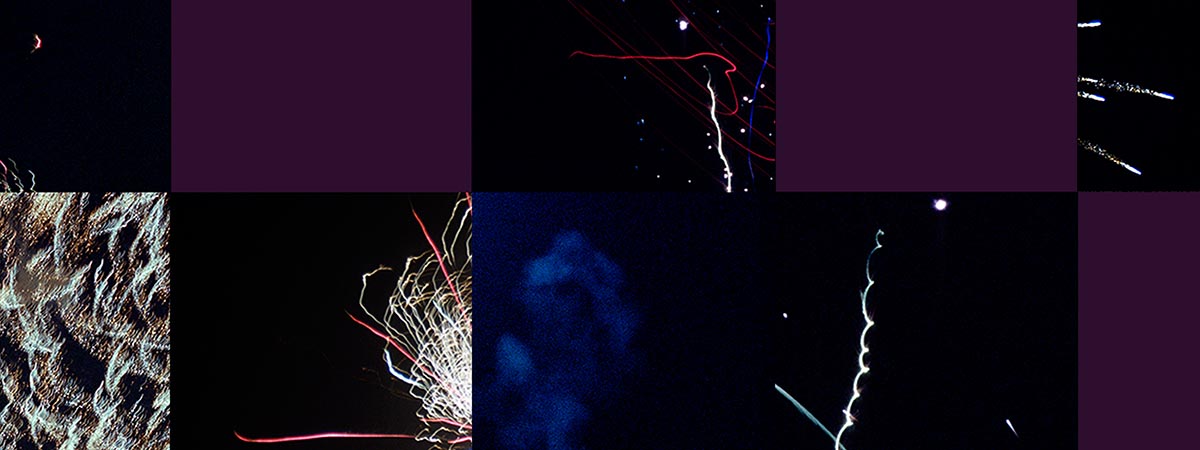

Its width is slightly less than the span of his arms. Just too big to lift comfortably or without risking damage. But he finds that, after protecting the edges with foam and corrugated cardboard and then binding the moving parts with rope, he can drag it on old towels and blankets and walk it over steps and kerbs. He manages to get it safely into the back of his estate car, before locking the empty house for the last time, on this cold, moonless, November night. At the other end he laboriously walks it, step by step, up to his fourth floor flat. Then, for hours every evening for a week or more, he works on it with rags, methylated spirit and polish, finally clearing away much of the ancient opaque black varnish and revealing again the figured grain of its oval top.
He has known this object since before he was a year old. On a February evening in 1955 his mother bathes and then wraps him in a clean white towel. She turns off the house lights and sits cuddling him in front of the coal fire: heat and light from the sun of three hundred million years ago filling the living room of the post war "prefab". The front door opens directly into this room, so he sees and will always remember the sudden appearance of his father. A grey tweed jacket coming slowly, backwards, through the door, bony white hands lifting one end of the table over the threshold. He has no image, no memory, of who is carrying the other end but he clearly remembers the bell like sound that the semi‑circular flaps of the top make as they swing, just an inch or two, gently striking the hard black legs.
The story in the family is that it was given to one of his Great Grandfathers as a wedding present; this is sometime around 1875. William Thomas Bedford works as a woodsman on the estate of an aristocrat near Faversham in Kent. At the time of their marriage he and his wife are given the use of a tied cottage, but they have to find furniture and chattels. So the gift, from the estate, of an old gate‑leg table that seats a family of six and then folds down to take up no more than a two by four foot rectangle of floor space, in what is a very small cottage, may not be generous but it is at least appropriate and useful. In the 1870s this table is already at least a hundred years old. Which means the wood from which it is made comes from oaks growing in the fourteenth century or before.

In letters, wills, and this account, the table has a documented relationship to William Thomas and his descendants. There may even be extant documentary evidence of it in the domestic records of its original aristocratic owners. It also has an anecdotal relationship with family members: there are living memories, first and second hand, of goings on around its oval top. But there is something more certain and direct in the object itself. At the edge of the large oak boards that make up its top you can see and touch the annular rings that show the various rates of growth, caused by fluctuating levels of sunlight and rainfall, of successive summers of five, maybe seven, hundred or more years ago. It is possible to match each ring to a specific year, the amount of growth being directly related to the weather conditions. Written in the fabric of this table there is a record, an analogue, of the sunlight and rain falling on Kentish woodland at a specific, identifiable, time in the past.
It may be William Thomas Bedford who makes a small but useful alteration to the table. Slotted under its central section is a long shallow drawer, possibly intended for storing cutlery. It is made of pine, rather than oak, and its effective but rough construction suggests an amateur addition. When he inherits the table, William Thomas's great grandson finds that the drawer contains a 1953 Coronation chocolate box: Queen Elizabeth II in a pale blue silk dress and Prince Philip in Navy uniform on the top. Lifting it out he is surprised by its weight. It is stuffed with family photographs, some from the 1980s of his mother and her grandson, many of unnamed men in uniform, stern ladies, uncertain girls in cloche hats, laughing babies.
One photograph makes him pause, something else that has to do with sunlight falling on Kentish woodland: a man holding a hatchet. A carte de visite photograph taken by F. W. Nichols, ‘Portrait, Architectural and Landscape Photographist’ of Lenham, Kent. There is no date, but he guesses it would be after 1870. The image is faded and damaged, but this man is clearly engaged in coppicing. Standing at a right angle to, but turning to look at, the camera, a bowler hat on his head, the hatchet in his right hand; to the right there a stack of long straight branches, probably sweet chesnut for hop poles. In the distance, just visible between trees, is a low thatched cottage. Like the annular rings of the table, this image has a relationship with light that is falling on Kent at some point in the past but, unlike the table, it contains within itself nothing that could put a precise (within the span of a year) date to that light. It may be possible to date this image if Mr Nichols’ records survive (‘No.3176. Negatives Preserved. Copies may be had at any time’ it says on the back) but the proof would be entirely documentary because, unlike the table, there is no reference source, no physical pattern contained within the image itself.
He lays the picture on the polished top and remembers his father's brother sitting at the table, back at the house after the funeral.
Uncle Joe is short man, red faced, plump and boisterous. As a child, the youngest of five, he spends hours at this table, with his brothers, sister and parents, always talking. One Sunday, when his siblings have all left home and he is the last one left, he brings a pale, tall, shy and elegant young woman called Ruby home for tea. She sits, straight backed and attentive, where her husband of fifty years, and widower, sits now.
Remembering this story, he looks hard at the picture: is this William Thomas Bedford? And is this Arnold’s Oak? He finds himself imagining someone on a distant planet, spinning round one of those bright stars in the constellation of Cassiopeia, about a hundred and fifty light years away. Could they, with some special viewing device be watching, at this moment, Elizabeth Grace making her way home through the wood? Could they detect her thoughts and her pleasures in the warmth of the August sun?
Slowly, he runs his fingers round the edge of the table's top, feeling the just perceptible pattern of the rings and ridges formed by more than a hundred consecutive summers. When? In what century is this wood a living tree? Someone knows: there must be an index of the patterns of tree time. He thinks of other indices and sees the image of a grid of measured and recorded seconds, minutes, hours, days and years, and then grid upon grid upon grid layering past into future. On this framework, infinitely complex and universal, solid objects, events and living beings all appear as arcs and trajectories that are forever fixed, forming and decaying across junctions and interstices.
He looks at the table again and thinks of Elizabeth Grace who, though obscured by the sediment of history, so many veils of falling leaves, is walking in the afternoon sunlight, going home to prepare supper for her husband while he cuts and stacks logs for his lordship. In the cottage in the wood they hold each other close, under one sheet, in the welcome cool of a summer night. High above, Cassiopeia points towards the pole star while a new universe of time, that is called William Arnold, begins to form. Delicate and pale Aunt Ruby glances nervously at ebullient Uncle Joe, who grins and winks back at her. In the orange glow of the sodium vapour lights in the courtyard of a South London housing block a man inches, and walks, and drags an old black table towards the concrete stairs. And now, in another place, his laptop rests on the figured oak grain as he writes and sends the code that makes these words and images appear on this page, for you.

This page was last modified:
Images and texts by P.F.WHITE (Peter Frankland White). ACTIVE: 196Os to the present. LOCATION: Europe (United Kingdom). SUBJECTS: vision, perception, location, time(s), class, power, rhilopia. STYLE: exploratory, aggregative, aleatory, attentive, punctum averse.
All material (except where otherwise acknowledged) is © Peter Frankland White, , and may not be reproduced in any form without written consent. See: Notes on Rights, Ethics, Privacy and Consent. Page design by Allpicture.